A week in training already gone!
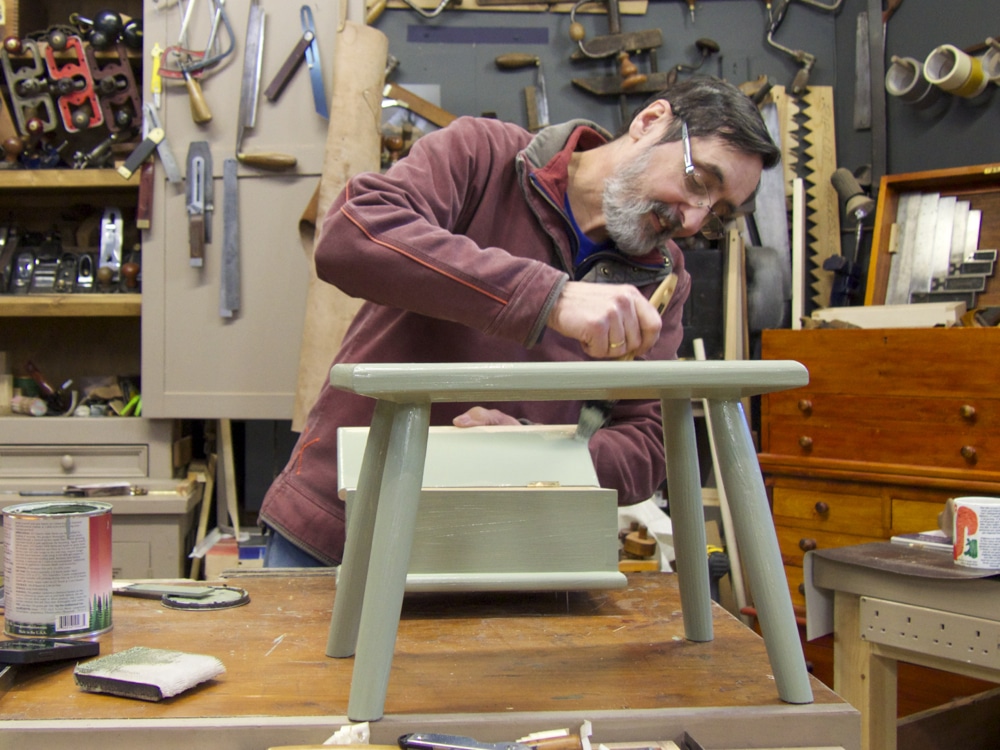
This first week of training for Lea and Sam moved along at lightning speed and they have several training projects under their belts already. it’s going to be interesting to see just what we can get done throughout this month. I’m still encouraged that this kind of less formal ‘work to change’ strategy is about the best thing we can do to help others become crafting artisans in their own right. We have taken what we’ve learned doing this over the past 20 years and applied to our online work and of course that’s working wonderfully well too. I had a lovely and encouraging letter (email) from a couple in the Himalayan mountains building their own home who are learning from us online and through YouTube. More and more people are dragging out their dad’s and granddad’s toolboxes from storage than ever and finding an old #4 they can restore and use and they’re doing it very successfully too. I really never expected to see over a million views in any given month but it’s a work-to-change experience for everyone. A couple of years ago I used to talk about Real Woodworking being a campaign to get people doing it in more real and tangible ways and less by substitute methods like machine only stuff.
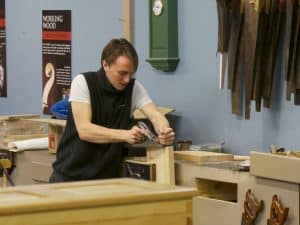
A few got offended and of course I wasn’t ever saying machines don’t have a place. More that they are highly dangerous, highly intimidating and they take the most massive of mostly unnecessary footprints that will preclude 90% of people from doing it that way. I felt then and now that many people were left outside the workshop because of machines and I also said, “Rightly so.” I wouldn’t have wanted my kids on the other side of a tablesaw or working a chopsaw. It was amazing how many wanted to kick out because of my saying youngsters shouldn’t be near machines or in an environment of machines because of the hazards of machines. Some wrote and said they let their kids use machines from 13 years old. In one year alone I saw a man, a friend from Fort Worth, slice all four fingers clean off on a tablesaw. The other inadvertently trailed his fingers on the end of a board as it passed over the jointer and he too lost three fingers to the second knuckle to the jointer. Just momentary lapses.
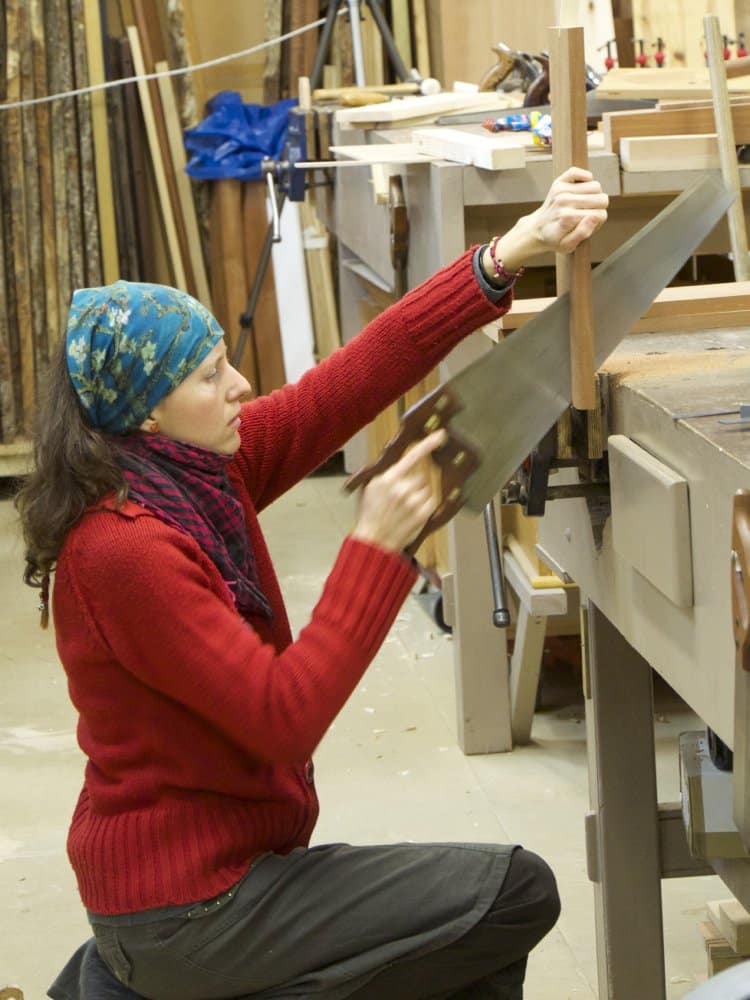
I use machines and have done so for 50 years. I know as much about them as I do hand tools and I like them too; they help me from time to time. All I can say is this; all, ALL, woodworking machines are handy and the are ALL fully charged with danger. And what about so called power tools? Well, I have seen enough gnarled fingers from routers to last me a lifetime, but what of such things as drill/drivers? One time a guy caught his thumbnail with a 3/32” drill bit in the battery driven drill/driver. It was only a 14V. The bit caught the nail and pulled the thumb all the way up onto the bit and went all the way through the thumb. Ever had an airmail go in and do a U-turn back out following the grain and into the back of your hand? I used a drill one time that caught in my shirt at the belly and pulled itself in a spin wrapping itself in the shirt until it hit me full in the face and knocked me to the floor with a broken, very bloody, nose. The customer ran upstairs, saw the blood and passed out. Things go wrong with hand tools too, but in my experience, the main difference between a power saw and a handsaw is that when you slip with the handsaw and catch your finger you always stop before you get through the bone.
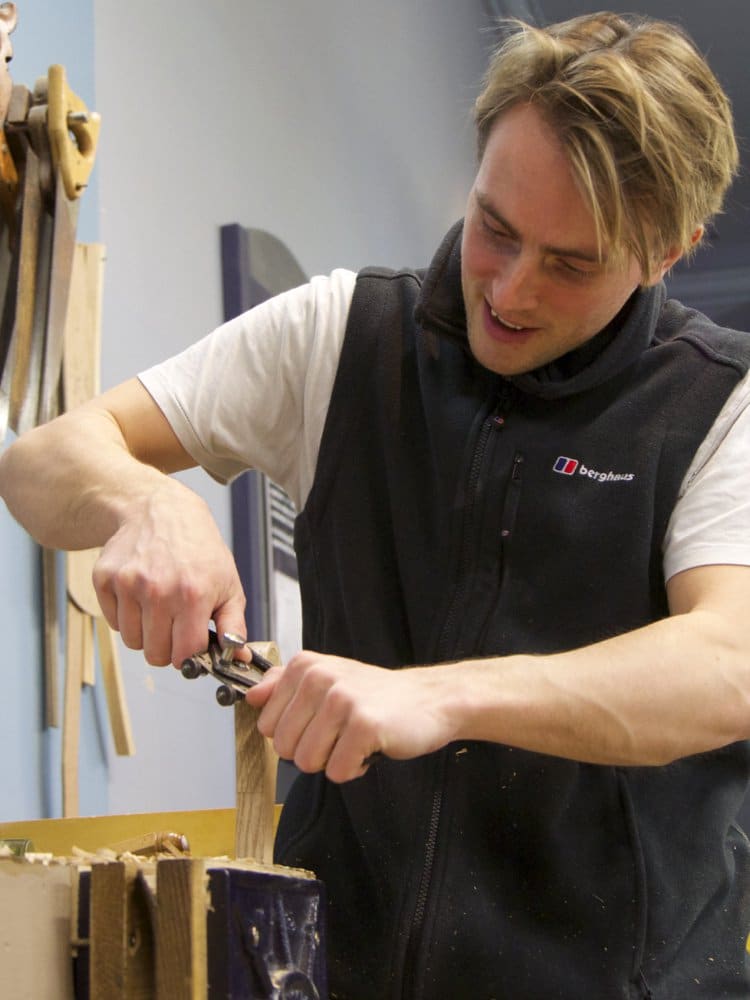
So here in the shop I have a couple of drill-drivers (screw guns), a bandsaw and an extractor and we get on with our ‘work-for-change’. We reach hundreds of thousands around the world who are discovering and rediscovering real woodworking and the Real Woodworking Campaign is of course thriving in the lives of hundreds of thousands now. Those who do get to spend time extra in my workshop with me and Phil know it’s a privilege and they work all the more diligently to become. What they struggle with, we see and guide them through till they come out the other side with some degree of success. The first week has gone really well. We will see what happens in the upcoming week and keep you posted.
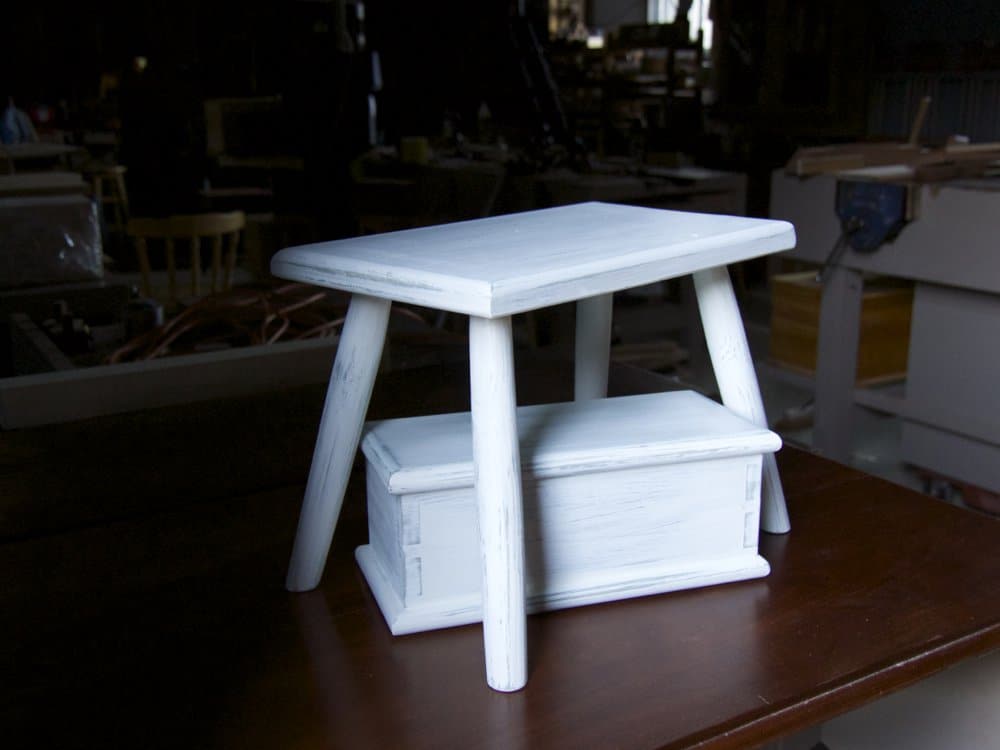


I would like to add a vote on the side of hand tools over the lowly drill motor for certain uses. I believe that the drill motor is perhaps the most overused machine tool that there is. I base this on the sheer number of misuses when being used to drive screws. Even in the hands of a pro, a drill motor’s angular momentum is difficult to control. It’s not the left/right, front/back wobble I’m talking about, it’s the over tightening at the end of the stroke. The feedback or touch you have with a drill motor simply cannot compete with that of a screw driver, including the wonderful old Yankee screw driver.
The modern adjustable clutch, in experienced hands, makes a big difference, but I have seen hundreds (perhaps thousands, I’ve been around quite a while) of screws over-tightened to the point of stripping the screw threads, stripping out the hole, mangling the screw head, breaking the screw, splitting the material into which the screw is being driven, over driving the screw down into the material, and so on. The drill motor is terrific for drilling holes and can be a great wrist saver if you have an abundance of screws to drive, but giving at least the last eighth inch over to a hand tool will often save the quality of the final product.
Could not have put it better! It’s been the development of the macho-man image I’ve seen develop too. Most of the energy is way too excessive and actually unnecessary. It’s more that craftsmanship has declined. No more pilot holes with self-drilling screws shanks, never countersinking cos now you have enough torque to sink a battleship full of screw heads and all into solid hardwoods. All the dictates of Bosch and Dewalt. Go to the woodworking shows and they have stands set up with 24 volt hammer-action drill drivers and a stack of 3″ screws being driven in by the dozen and proud salesmen, chests stuck and a grins on their faces saying inside, “Gotcha.”
They say the journey is as important as the destination. Using machines seems, to me, like driving on the motorway/highway, whilst hand tools are country roads – motorways get you there quicker but you’re staring at nothing but road and bumpers for hours on end – boring!
I’ve thought about that great metaphor as well and I think an even better comparison might be cycling v. driving.
Driving is sometimes necessary to get far quickly, and it seems efficient in the short-term, but the long-term consequences (pollution and waste) are less efficient than cycling is in the long-term for most trips we need to take in a city. Driving can also kill or maim you or someone else in a split second and often by total accident. Cars also require large upfront costs and large maintenance costs that often require service beyond the capacity of their owner and therefore require outsourcing to a skilled mechanic. Cars are also updated annually and the companies behind them constantly tout the new model’s vastly improved performance. All of these things could be said about power tools.
Cycling, like hand tools, will get you short or medium distances relatively quickly and often more quickly than cars depending on the situation (at least where i live bicycles are much faster than traffic, because cars require the “jigs” of lanes and stop signs to operate safely). They also require no external fuel, just food and coffee, like hand tools. You CAN be killed on a bicycle but usually only by a car. You can’t really hurt anyone else on a bicycle. And bicycles don’t cost much and can easily be maintained by their owner with a limited amount of relatively cheap tools. Finally, bicycles work for decades and decades if they’re kept well, and often vintage bikes are valued highly because of their style and history and ability to continue working to the task.
Of course we need automobiles to deliver bicycles to us and we need machines to build the bike parts — just as we rely on mechanized processes to build and deliver hand tools (most of the time nowadays). But 9 times out of 10, for the average person in a town or city, a bicycle is going to get you to your destination within the same relative ballpark time, in one piece, and will improve your well-being in the process. And even if it takes longer, you’re outside and connected and able to “smell the roses.”
Anyway … long comment but that’s how I see it!
Evan, don’t forget the quiet of the bicycle vs the constant noise of the engine, especially on a back road or country lane.
Your observation:
“Finally, bicycles work for decades and decades if they’re kept well, and often vintage bikes are valued highly because of their style and history and ability to continue working to the task.”
I have a 50-year old Rudge that is still going strong(original leather seat) and a joy to ride. Just wish it had more than three gears; that was OK when in my twenties.
I frequently wear nylon gloves when working in my dirty, cold garage – where my work bench is. I once caught the glove in my (mains) power drill, and squeezed the glove so tight I thought it had crushed the bones. Just very bad bruising and contorted flesh, luckily, but it took about six months to heal fully.
Hand power tools can be as dangerous as the bigger machines. Be careful out there!
Love this!!! There is such a huge difference in the effect on one’s quality of life between one method (power-drilling a mortise and turning a stool leg on the lathe and then seating the joint) versus the other method (boring with a brace and shaving the leg to fit and seating THAT joint). The measure of success on the one hand is — the leg didn’t spin off the lathe and hit me in the face, the drill didn’t blow out the top of the stool, and sure enough it fits and now I can take off my dust mask. The other measure of success is — I broke ever facet of the leg with my hand and eye and spokeshave, loving and caring for the leg as I formed it with intelligence and physical responses to the design I wanted to achieve, and I put my body weight into the brace and felt the wood being severed by the bit — and wow, it fits and it’s beautiful and I did it all by hand. The difference is immeasurable even though the outcome is the same.
Machines are here to stay, this is almost like the Terminator. In this case it all stars with the No 4. Now Skynet has become self aware Ouch!!! There goes a body part. Back when all the craftsman were on a none electrical diet there was no electricity…. No electricity, no power tools! Electricity has killed allot of people that’s a fact and I agree machines are dangerous all types some more than others but I choose not to approach the craft with fear; as injury could come at any time in life. I choose to live free within the craft. Ultimately what am after is the realization of my vision. If a number 4 will do the work that’s what I use. If I need to use a Power Jointer and it’s available am going to use it. Even then limiting myself by placing myself under a category it’s not embracing my full potential. It’s possible to make amazing furniture with out power tools, and many other things as well. Learning how to do so is a rewarding experience. Let’s get in the shop and build, build until the heart is content.
I suppose these days I am catering as much to those who could never own a machine. Don’t and never would have the money, no workshop space or even a workshop, yet they really love to woodwork. Generally it has been more the USA that seems to have the machine shop for woodworking. Not so here and in mainland Europe and then even the rest of the world. It can give the impression if all the information comes from the US that everyone has and needs machines to be a woodworker. It is a strange world that people can have cell phones and access to the world wide web and not have a home or a place to work in these days.
Hi Paul, I am not sure how I came across you, but I think it was on Youtube. How you came into my life is not as important as the fact that you did come into my life. I come from a long line of tinkerers/woodworkers. I have found many old tools in the basements of uncles on both sides. Most of my uncles and cousins love machines, and have shops full of them. I am drawing near the end of a career, and realized I may still have 25 years of productive work in front of me, so I started looking at all the modern woodworking machines. I never felt comfortable, but I reasoned I would learn to enjoy it, since I would be making things. Before I bought anything I came across you, and reconsidered my plans. I have not made anything from wood in 25 to 30 years, but now I look forward to learning to use all those old tools from my grandfather and uncles to make something with heart. You are a true role model for change, and I hope to be able to shake your hand someday. Yes, the one with all it’s digits intact. Thank you, and let us know if you will be back in the US.
Hi Paul, I’ve been lurking here on your blog and website for awhile now,mostly because I like your approach to teaching.
I’ve been a professional blacksmith and instructor for over forty years now and find yours and mines approach very similar. Even though blacksmithing is very different from woodworking my feelings about how and why I’ve lived my lifestyle are very much inline wit each other.
Your statement in the caption under Sam’s picture about learning and developing real hand skills begged me to leave a reply. Being able to do make things with hand tools safely and often times more quickly with less cost than power tools, is something I often try to express to my students. The greater personal satisfaction and sense of well being of making by hand can only be understood from the the act of doing it.
Keep up the good work.
Yours,
Dick Sargent